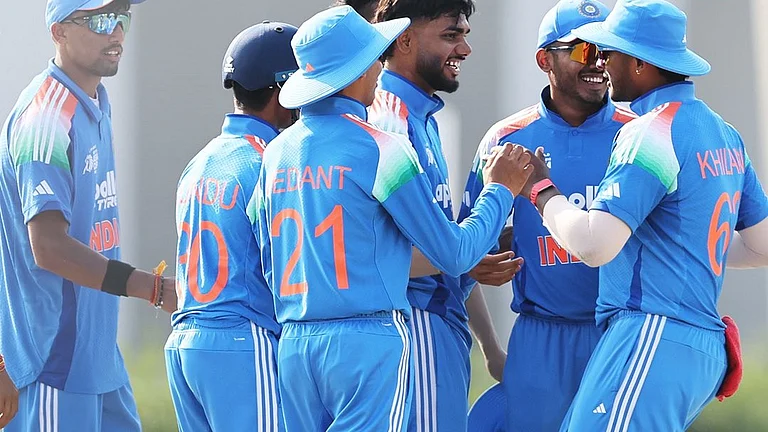A Heritage Circuit
With a history dating back millennia, Madhya Pradesh is the heart of our country’s artistic and architectural legacy. The classic quartet — Khajuraho, Orchha, Gwalior and Shivpuri — remains one of the best heritage experiences to be had with its history whispered through temples, forts, palaces and rock-cut sculptures. Begin with Khajuraho’s medieval temples, and be assured that whichever hotel you choose, you’ll likely be a stone’s throw from the famed structures.
The Lalit Temple View, Khajuraho, is just 500m away. Orchha is just 2.5hrs by road from Khajuraho, so a day trip to view its magnificent palace-fort is possible. Up next, Gwalior, for the spectacular Gwalior Fort and Tansen’s tomb. Usha Kiran Palace, a 120-year-old palace set amid nine acres and the historic Deo Bagh Palace, albeit smaller with only 15 rooms offer heritage stays. And finally, Shivpuri, the erstwhile summer capital of the Scindias, with its palaces and hunting lodges. MP Tourism’s Tourist Village is the place to stay.
A Glacial Adventure
The Nanda Devi National Park, in its vastness, holds many delightful treks up various radial valleys to the hulking high peaks that curtain the core area of the Nanda Devi sanctuary. Just up the road from the famous Bhotia village of Lata on the highway to Gamshali in the Dhauli Ganga valley is the village of Jumma. From here, a shepherds’ track winds up the steep valley of the Bagini to the village of Dunagiri, which gives its name to the mountain that stands at its head. A five days’ walk up from Jumma through forests of oak and deodar and grasslands brings you to the cracked sweep of the Bagini glacier with its enclosing peaks — Rishi Parbat, Hardeol, Tirsuli, Kalanka, Changabang and the giant Dunagiri. If you’re up early you can trek further up the glacier towards the Bagini pass on a saddle to the southwest of Changabang on the peak’s northwest face for a spectacular sunrise.
On Pilgrimage Blues
You can see him from 10 kilometres away, his regal gaze upon a helplessly supplicant world from atop the taller of the only two hills in the vicinity of the rolling landscape. It is Bahubali, or the more affectionate Gomatesvara, son of Adinatha, first of the Jain Tirthankaras, who stands thus in the Pratima Yoga posture, a 17m monolithic statue reached by climbing 650 steps of the taller hill, the Vindhyagiri. He inspires a certain quiet, this composed sentinel of over a thousand years, his size as difficult to grasp as his tranquillity, a word that somehow fails to describe his infinite peace well enough. Visitors to Sravanagbelagola would do well to spare time for its even older history, now seen in a clutch of temples, caves, monuments and inscriptions, especially those on nearby Chandragiri. Since Sravanabelagola isn’t what one might call a tourist hub, stay at the better equipped but expensive (for what it offers) Hassan, which is but 50km away. Try the earnest Hoysala Village Resort or the bureaucratic Hassan Ashok. Hassan is also a good base for visits to the Hoysala temples at Halebid (40km) and Belur (34km).
High Tea And Rhinos
Tucked between the Himalayan wilderness and the woods of the Northeast, the Dooars have always offered a cogent argument for leisurely escapes — preferably, on elephant back. But while only the most intrepid travellers ventured into Jaldapara’s beautiful jungles earlier — threatened not by wild animals, but by the state of the government-run lodges here — the tourist in 2013 is spoilt for choice. Among the best-known properties in the area — near the national parks of Gorumara and Jaldapara — are Sinclairs Retreat Dooars, perched on the Chalsa hilltop and Zurrantee, a turn-of-the-century British bungalow cosseted by tea gardens. You could also consider staying at some of the smaller, budget hotels in the area, such as Tusker’s Den, and the Jaldapara Jungle Camp.
On A Buddhist Trail
Andhra Pradesh is one of the richest regions in the country to view ancient Buddhist archaeology. Large monastic sites and rock-cut caves bear testament to over a thousand years of Indian Buddhist history, from the earliest Theravada to later Tantric Buddhism, spread spatially from the first millennium BC to about the 11th century AD. The uplands of the Eastern Ghats, areas of the Krishna river valley and small hills running down the Coromandel Coast contain these sites, some spectacular, almost all unknown. These offer a fascinating glimpse into a neglected facet of our past. Important sites include Thotlakonda, Bojjanakonda, Lingalakonda and Bavikonda in the Vizag area, Salihundam near Srikakulam, Dharanikota (ancient Dhanyakataka), Nagarjunakonda and Amaravati in Guntur district and Guntupalli near Vijaywada.
A Classic Drive
Looking for a road less travelled? Take a U-turn. For we’re off again on that classic route where, come summer, army trucks are often outnumbered by private vehicles caked in mud. A lot has changed on the route over the years — there are more (often better) places to bed in; route and permit-related information is easier to come by; plus there are several reliable travel operators willing to handhold first-timers — or show the ‘veterans’ how it’s really done — through the challenging highs of Himalayan riding. Helmet Stories, run by bikers Harsh Man Rai and Vir Nakai, is just such an outfit. They tailor several itineraries — and do so in style — making the most of places as splendid as their names.
A Vale of Dakinis
Deep in the valley of the Yang Sang Chu, lies one of the Tibetans’ fabled hidden sanctuaries — a ‘beyul’ called Pemako. Dedicated to the goddess Vajrayogini (Dorje Phagmo in Tibetan), this lush region, imagined in the shape of her body, straddles either side of the Indo-Tibetan border — the peaks Namche Barwa and Gwala Peri are her breasts. The most sacred part of Pemako, however, is the vale of the Yang Sang Chu, considered a realm of the magical dakinis. This lushly forested valley is peopled by Khampa Tibetans and Mishimi tribes, both of whom worship the holy peaks of Riwutala and Pema Siri at the head of the valley. A ‘kora’, or pilgrim route, runs through this valley — a fascinating trail that takes all of twenty days to finish. Crossing Mishimi villages and sacred monasteries like Devekota and Mankota, this is a tough, but unbelievably beautiful trek in one of the remotest corners of the country.





















